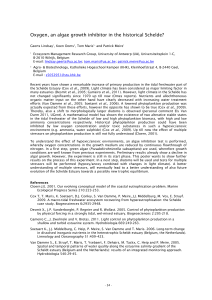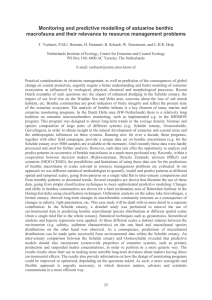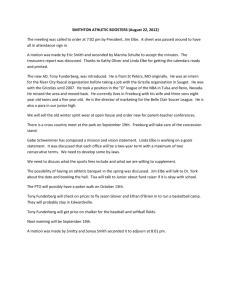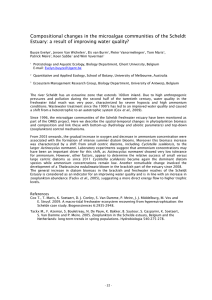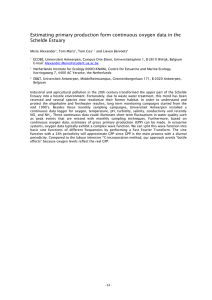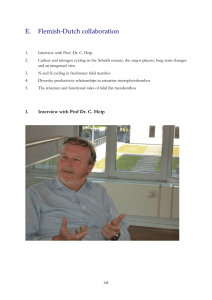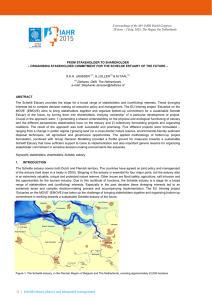Oxygen deficiencies in the Schelde and Elbe Estuary: same
advertisement
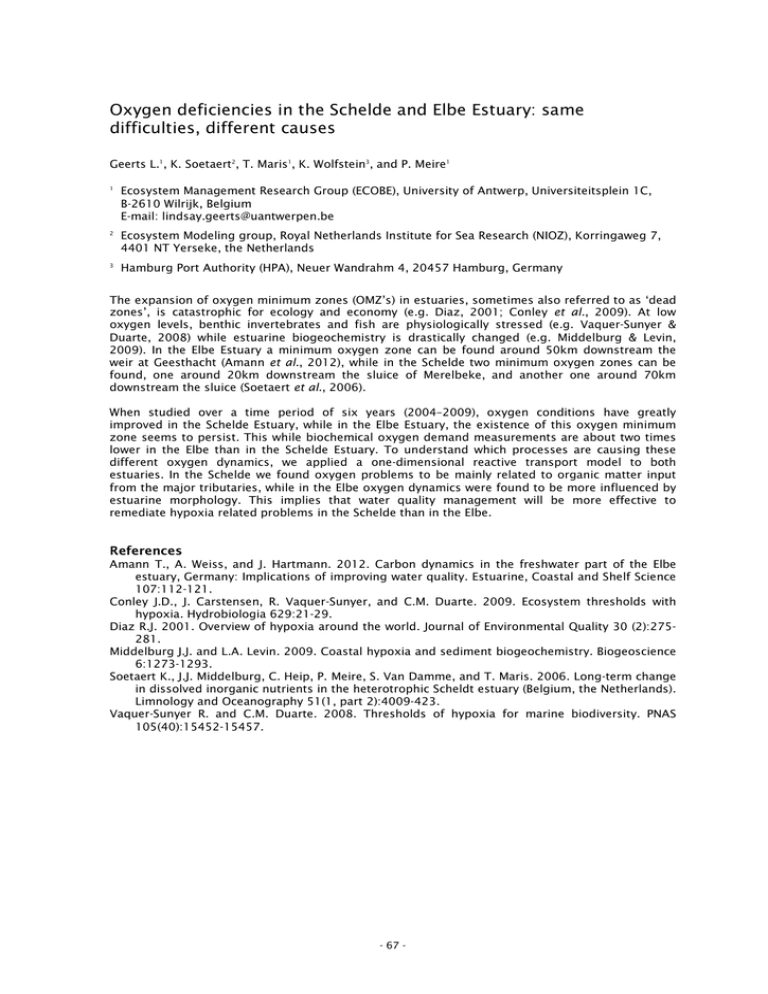
Oxygen deficiencies in the Schelde and Elbe Estuary: same difficulties, different causes Geerts L.1, K. Soetaert2, T. Maris1, K. Wolfstein3, and P. Meire1 1 Ecosystem Management Research Group (ECOBE), University of Antwerp, Universiteitsplein 1C, B-2610 Wilrijk, Belgium E-mail: lindsay.geerts@uantwerpen.be 2 Ecosystem Modeling group, Royal Netherlands Institute for Sea Research (NIOZ), Korringaweg 7, 4401 NT Yerseke, the Netherlands 3 Hamburg Port Authority (HPA), Neuer Wandrahm 4, 20457 Hamburg, Germany The expansion of oxygen minimum zones (OMZ’s) in estuaries, sometimes also referred to as ‘dead zones’, is catastrophic for ecology and economy (e.g. Diaz, 2001; Conley et al., 2009). At low oxygen levels, benthic invertebrates and fish are physiologically stressed (e.g. Vaquer-Sunyer & Duarte, 2008) while estuarine biogeochemistry is drastically changed (e.g. Middelburg & Levin, 2009). In the Elbe Estuary a minimum oxygen zone can be found around 50km downstream the weir at Geesthacht (Amann et al., 2012), while in the Schelde two minimum oxygen zones can be found, one around 20km downstream the sluice of Merelbeke, and another one around 70km downstream the sluice (Soetaert et al., 2006). When studied over a time period of six years (2004–2009), oxygen conditions have greatly improved in the Schelde Estuary, while in the Elbe Estuary, the existence of this oxygen minimum zone seems to persist. This while biochemical oxygen demand measurements are about two times lower in the Elbe than in the Schelde Estuary. To understand which processes are causing these different oxygen dynamics, we applied a one-dimensional reactive transport model to both estuaries. In the Schelde we found oxygen problems to be mainly related to organic matter input from the major tributaries, while in the Elbe oxygen dynamics were found to be more influenced by estuarine morphology. This implies that water quality management will be more effective to remediate hypoxia related problems in the Schelde than in the Elbe. References Amann T., A. Weiss, and J. Hartmann. 2012. Carbon dynamics in the freshwater part of the Elbe estuary, Germany: Implications of improving water quality. Estuarine, Coastal and Shelf Science 107:112-121. Conley J.D., J. Carstensen, R. Vaquer-Sunyer, and C.M. Duarte. 2009. Ecosystem thresholds with hypoxia. Hydrobiologia 629:21-29. Diaz R.J. 2001. Overview of hypoxia around the world. Journal of Environmental Quality 30 (2):275281. Middelburg J.J. and L.A. Levin. 2009. Coastal hypoxia and sediment biogeochemistry. Biogeoscience 6:1273-1293. Soetaert K., J.J. Middelburg, C. Heip, P. Meire, S. Van Damme, and T. Maris. 2006. Long-term change in dissolved inorganic nutrients in the heterotrophic Scheldt estuary (Belgium, the Netherlands). Limnology and Oceanography 51(1, part 2):4009-423. Vaquer-Sunyer R. and C.M. Duarte. 2008. Thresholds of hypoxia for marine biodiversity. PNAS 105(40):15452-15457. - 67 -

